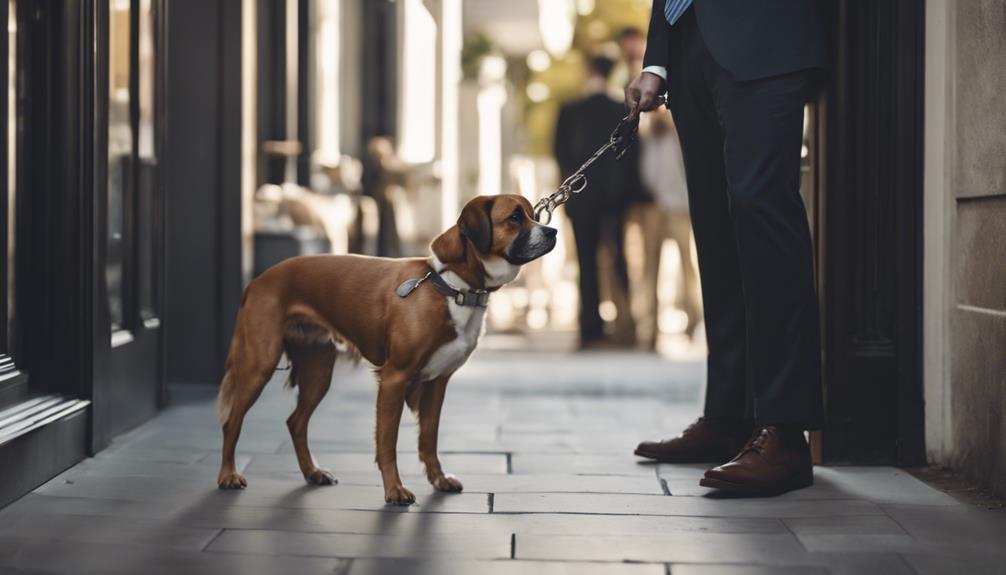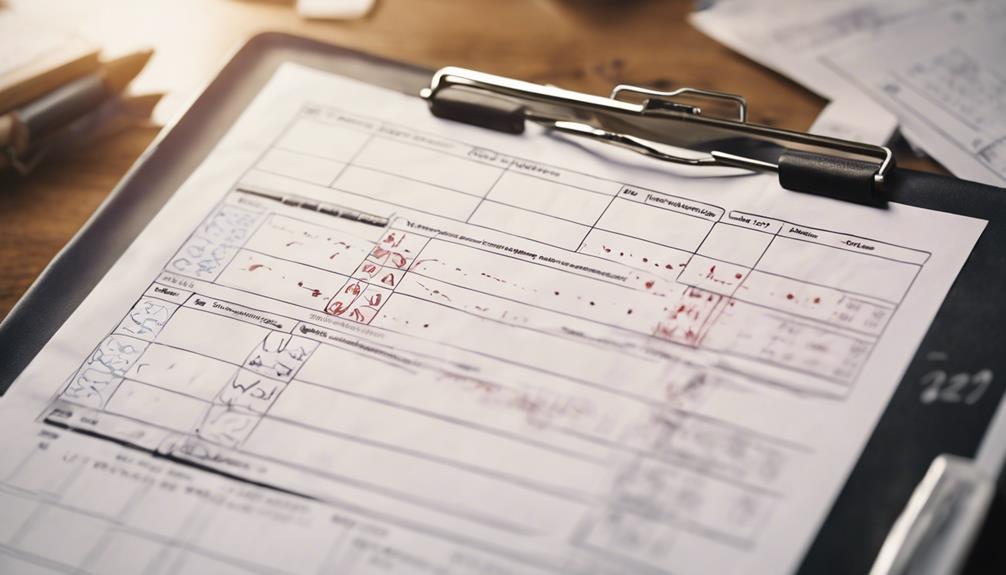As professionals navigate the return to the workplace, a crucial aspect often overlooked is the readiness of their canine companions for this transition. The adjustment for dogs, particularly those who have grown accustomed to constant human presence during the pandemic, can be challenging and may lead to various behavioral issues if not addressed proactively.
Recognizing the importance of preparing your dog for this shift is paramount, and understanding the strategies to ease their transition is essential. By exploring key insights and practical tips tailored to different dog categories, pet owners can lay the groundwork for a harmonious post-pandemic routine for both themselves and their furry friends.
Key Takeaways
- Adjust daily routines gradually to prepare your dog for your return to work.
- Practice leaving your dog alone to prevent separation anxiety and destructive behaviors.
- Seek professional advice if your dog shows signs of distress when left alone.
- Be proactive in helping your dog adapt to your absence to ensure their safety and well-being.
Understanding Your Dog's Needs
Understanding your dog's needs is essential for ensuring their well-being and happiness, particularly as you prepare to transition back to work after spending extended time together at home.
Different categories of dogs, such as puppies adopted during work-from-home, dogs living with you before the pandemic, and dogs with behavior issues, require varying transition periods. Puppies may need more time to adjust to a new routine compared to dogs familiar with pre-pandemic work schedules.
To help your dog adapt, consider adjusting daily habits to mimic office routines, such as changing walk and meal times. Additionally, practicing leaving the house alone can assist your dog in getting accustomed to your absence, minimizing the likelihood of separation anxiety and destructive behaviors.
Transitioning Your Dog Gradually
To facilitate a smooth adjustment for your dog as you prepare to return to work, gradual transitioning is key to minimizing potential stress and behavioral issues. Start by gradually increasing the time you spend away from home, allowing your dog to become accustomed to longer periods of solitude. Begin with short absences and gradually extend the duration over time. This approach helps your dog understand that your departures are temporary and not a cause for alarm.
Introduce new routines slowly, such as adjusting meal times and exercise schedules to align with your upcoming work hours. By easing your dog into the changes gradually, you can help them feel more comfortable and secure as you transition back to your regular work routine.
Mimicking Office Routines at Home

Facilitating a smooth adjustment for your dog as you prepare to return to work involves gradually incorporating office routines at home, ensuring a seamless transition for your furry companion. To mimic office routines effectively, consider the following:
- Adjust daily habits like walk and meal times to align with your future work schedule.
- Practice leaving the house alone for short intervals to help your dog get used to your absence.
- Create designated areas where your dog can stay while you are working to simulate your absence.
- Introduce interactive toys or puzzles to keep your dog engaged while you are away.
Practicing Time Apart From Your Dog
As you prepare for your return to work, it is essential to gradually introduce periods of time apart from your dog to help them adjust to your absence. Start by practicing short periods of separation, gradually increasing the duration over time. This will help your dog become accustomed to being alone and reduce the likelihood of separation anxiety when you are back at work.
Create a calm environment before leaving, provide engaging toys or treats, and establish a routine to signal your departure. Monitoring your dog's behavior during these practice sessions can help you gauge their comfort level and address any signs of distress early on.
Recognizing Signs of Distress

During the adaptation period to your return to work, it is crucial to observe your dog for signs of distress that may indicate difficulty coping with your absence.
- Excessive barking, howling, or whining when left alone.
- Destructive behaviors like chewing on furniture or doors.
- Pacing, restlessness, or constantly seeking attention.
- Changes in eating or bathroom habits, such as loss of appetite or indoor accidents.
Recognizing these signs early on can help you address any issues promptly and ensure a smoother transition for your furry companion. Monitoring your dog's behavior closely will allow you to provide the necessary support and interventions to help them adjust to your changing schedule effectively.
Seeking Professional Guidance Early
Seeking professional guidance at an early stage can significantly enhance the successful adaptation of your dog to your return to work routine. By consulting with a professional, you can address any concerns or issues proactively, ensuring a smoother transition for your furry friend. Here is a table summarizing the benefits of seeking professional guidance early:
| Benefits of Seeking Professional Guidance Early |
|---|
| Early identification of potential behavior issues |
| Tailored advice for your specific dog's needs |
| Preventative measures for separation anxiety |
| Establishing a structured training plan |
| Building a support system for you and your dog |
Preventing Separation Anxiety

To ensure a smooth adjustment for your dog as you prepare to return to work, it is essential to focus on preventing separation anxiety through proactive measures and structured training. Separation anxiety can be distressing for your dog and may lead to destructive behaviors. Here are some tips to help prevent separation anxiety:
- Gradually increase alone time to acclimate your dog to your absence.
- Provide interactive toys or puzzles to keep your dog engaged while you are away.
- Practice leaving and returning home without making a big fuss to normalize departures.
- Consider enrolling your dog in obedience training classes to build confidence and independence.
Addressing Destructive Behaviors
Addressing Destructive Behaviors in dogs requires a strategic approach to modifying unwanted actions and promoting positive behaviors. Destructive behaviors such as chewing furniture, excessive barking, digging, or scratching can often be a sign of underlying issues like anxiety, boredom, or lack of proper training.
To address these behaviors, it's crucial to provide mental and physical stimulation through interactive toys, regular exercise, and training sessions. Reinforcing good behavior with rewards and positive reinforcement techniques can also help redirect your dog's focus and encourage desirable actions.
Consistency in training, setting clear boundaries, and seeking guidance from a professional trainer or behaviorist when needed are essential steps in addressing and curbing destructive behaviors in dogs.
Exploring Related Articles for Insights

Upon delving into the plethora of related articles, a comprehensive understanding of various aspects concerning dog behavior and well-being emerges, offering valuable insights for pet owners navigating the transition back to work.
- Understanding the signs of separation anxiety in dogs.
- Importance of gradual adaptation to prevent destructive behaviors.
- Tips for maintaining a happy and healthy relationship with your pet during the transition.
- Challenges in securing vet visits and potential solutions.
Setting Up a Daily Schedule
How can pet owners effectively establish a structured daily routine for their dogs as they prepare to return to work?
As you transition back to the office, it's crucial to set up a daily schedule that aligns with your future work hours. Start by adjusting your dog's waking, feeding, and exercise times to match the routine they will experience when you're away.
Introduce short periods of alone time gradually, allowing your dog to adjust to being by themselves. Consider confining them to certain areas of the house to simulate your absence. Monitoring their behavior during these times can help you gauge their readiness for longer periods alone.
Seeking guidance from experts if your dog displays signs of distress is advisable for a smooth adjustment process.
Monitoring Your Dog's Progress

To effectively track and assess your dog's adaptation to your return to work, consistent observation of their behavior and emotional state is crucial.
- Keep a daily journal noting any changes in behavior or mood.
- Use a pet camera to monitor your dog's activities while you're away.
- Schedule regular check-ins with your dog walker or pet sitter for feedback.
- Seek guidance from a professional trainer or veterinarian if you notice concerning signs of distress.
Should I Be Concerned About My Dog’s Twitching Behavior When Returning to Work?
If you notice your dog twitching in sleep, it’s not necessarily a cause for concern. Twitching during sleep is a normal behavior for dogs and is usually nothing to worry about. However, if your dog is twitching while awake or showing other unusual behaviors, it may be worth seeking advice from a veterinarian.
Conclusion
In conclusion, preparing your dog for the transition back to the workplace is crucial to prevent separation anxiety and behavioral issues. By understanding your dog's needs, transitioning gradually, mimicking office routines, practicing time apart, and monitoring their progress, you can support a smooth adjustment process.
Recognizing signs of distress and addressing destructive behaviors promptly are essential steps in fostering a harmonious relationship between you and your canine companion. Stay proactive and patient as you navigate this important transition.




